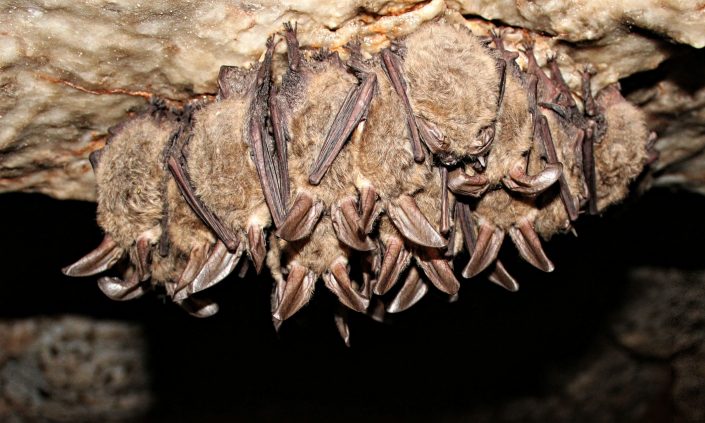Fungus that kills hibernating bats is detected in Texas for first time

Image: Texas A&M AgriLife
The fungus that causes white-nose syndrome in hibernating bats has been detected on three species in the Texas counties of Childress, Collingsworth, Cottle, Hardeman, King and Scurry.
Bats play an important role in controlling insect populations that pose threats to Texas crops as well as assist in crop pollination. In 2011, the authors of the paper “Economic Importance of Bats in Agriculture” estimated the loss of bats to have a negative economic impact on U.S. agriculture of at least $3.7 billion annually. Recent studies indicate the value of insect control by bats to Texas agriculture is $1.4 billion annually, based on fewer crop losses from insects, reduced disease and less pesticide use.
The fungus was found in samples collected by a team from Texas A&M University’s Institute of Renewable Natural Resources and wildlife and fisheries sciences department, along with Bat Conservation International. The tested samples showed the fungus was present on tri-colored, cave myotis and Townsend’s big-eared bats.
“White-nose syndrome, which is caused by the Pseudogymnoascus destructans fungus, has already caused catastrophic bat losses in the eastern U.S. and is projected to be in Texas within the next few years,” said Melissa Meierhofer, a research associate at the Institute of Renewable Natural Resources in College Station. “The disease was first reported in New York 10 years ago and has been spreading to other bat populations at a distance of about 100 miles per year.”
Texas, with 32 bat species, has the greatest bat fauna diversity in the United States, according to the Texas Parks and Wildlife Department. To date, bats with white-nose syndrome disease symptoms have been found in 30 U.S. states and five Canadian provinces. The fungus causing the disease has been discovered in three additional states as it makes its way across North America.
Since 2011, the TPWD has worked with Bat Conservation International to monitor caves in the Panhandle for the disease. In 2015, the agency funded a statewide project with the IRNR and wildlife and fisheries sciences focused on early disease detection and identification of bat populations before white-nose syndrome appeared.
Meierhofer said the fungus had previously been discovered within the past three years in bats wintering in the neighboring states of Arkansas and Oklahoma and that it was “only a matter of time” before the fungus and disease came to Texas.
“White-nose syndrome is only known to affect hibernating bats and has no direct health impact on humans,” she said. “The cold-adapted fungus causing the disease irritates the bat’s skin, disrupting its hibernation and causing it to deplete its store of fat. And while instances of the fungus in nearby states may not have resulted in the death of the infected bat, they still demonstrated the potential for the disease to occur in Texas and the need to be vigilant.”

